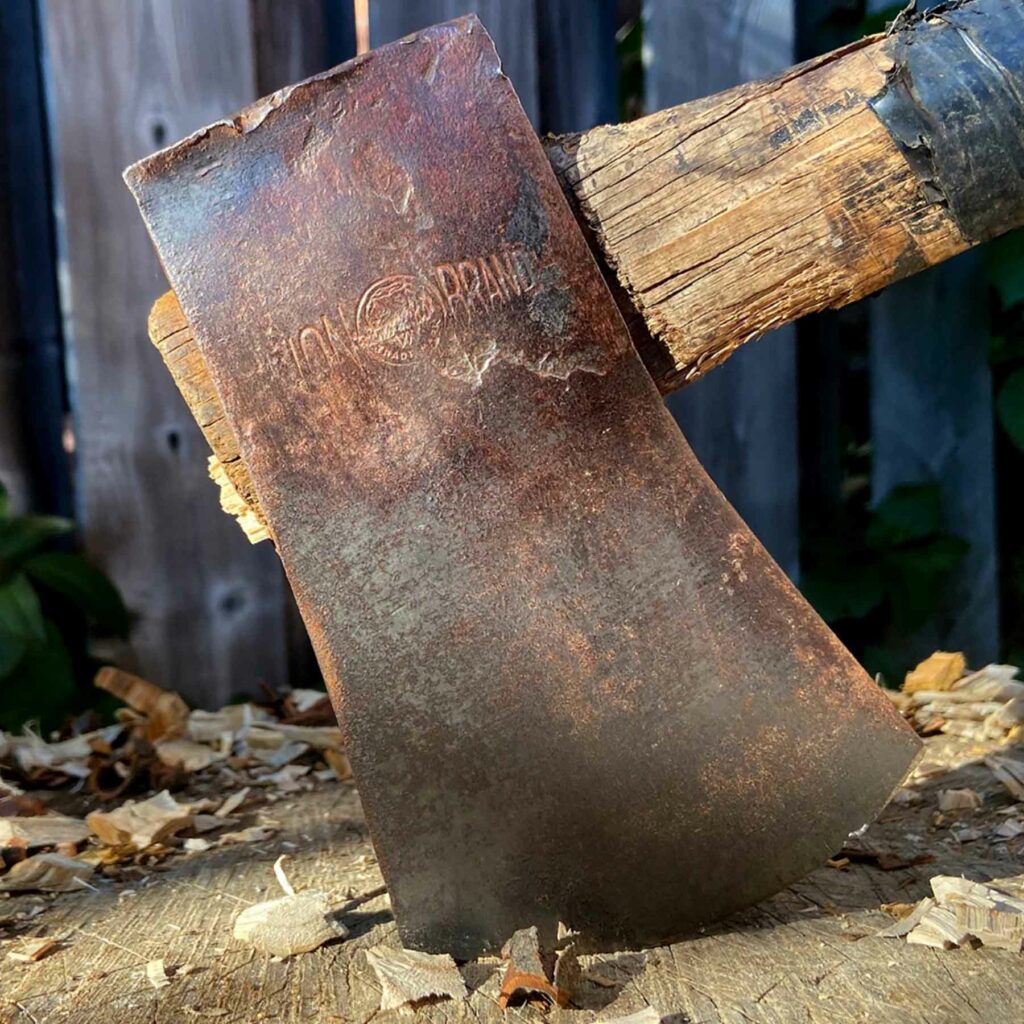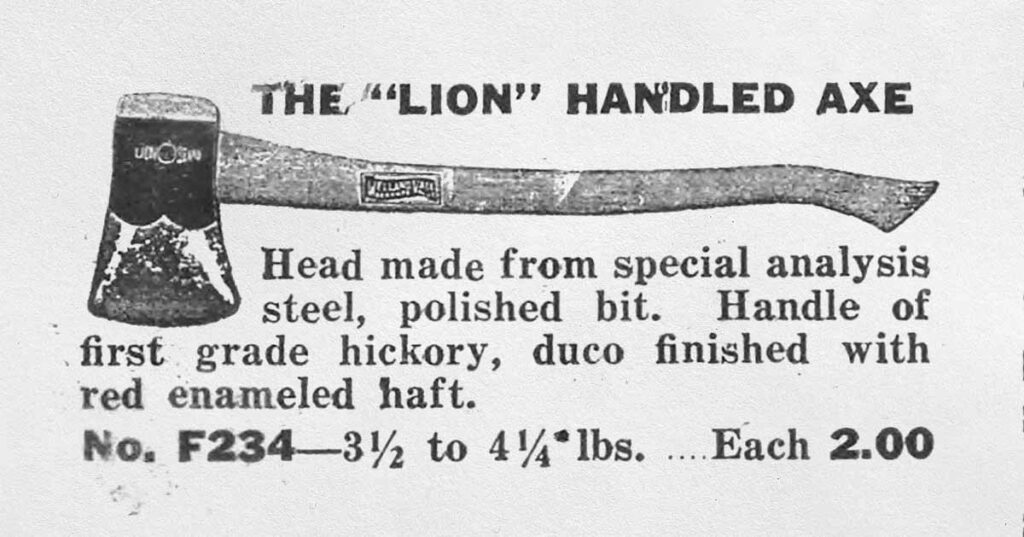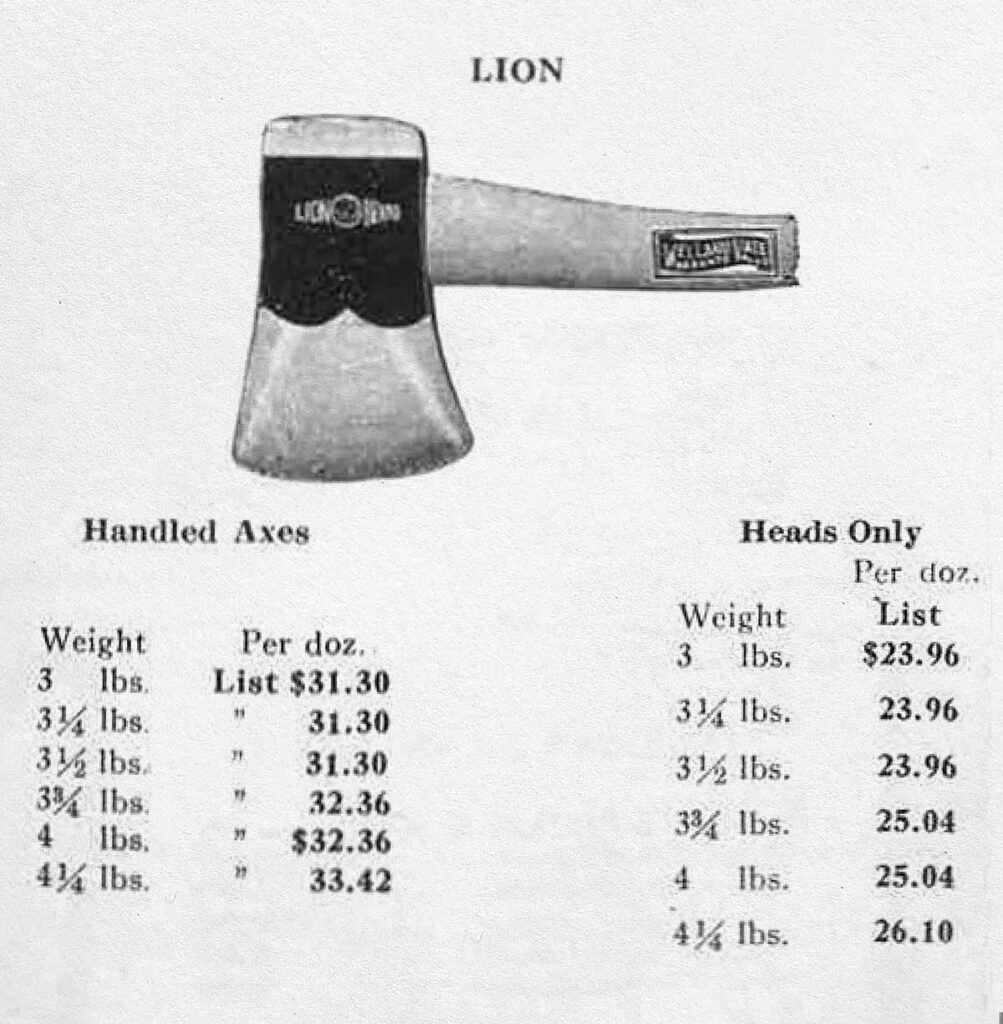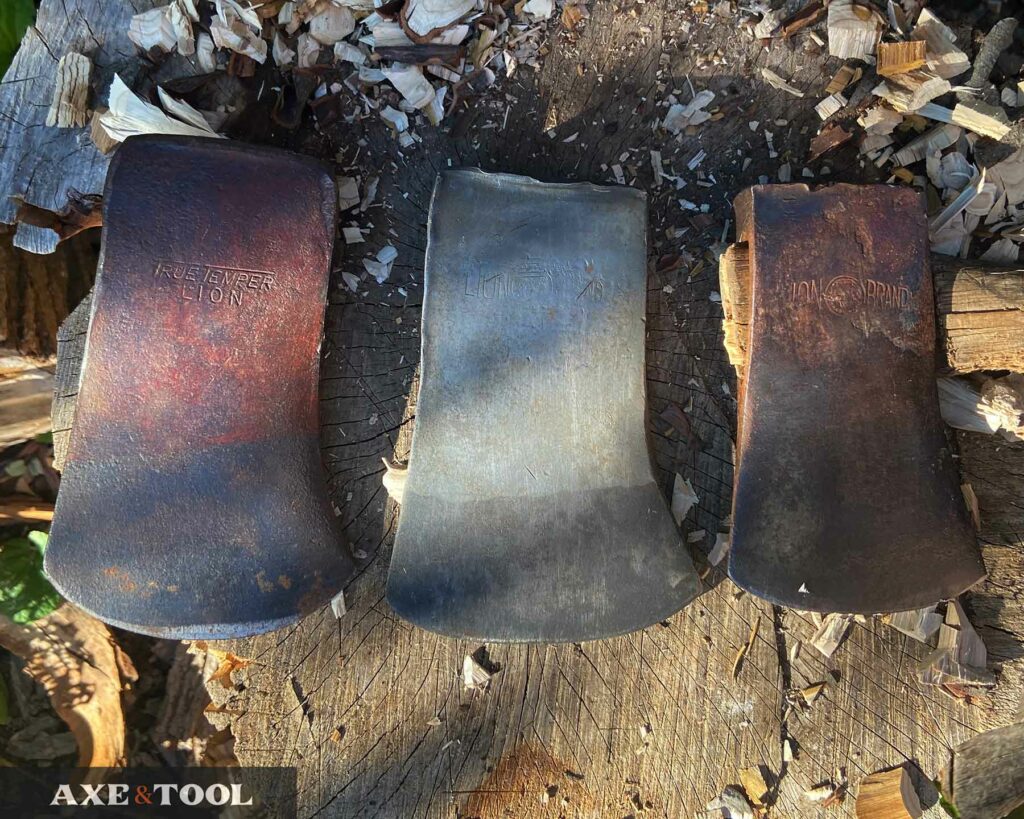Lion Brand Axes
1912 – 1950
Welland Vale Mfg Co.
St. Catherines, Ontario

Lion Brand was an iconic line of axes by Welland Vale Mfg Co. in St Catherines. They were sold as the “standard” tier of axe between 1912-1950, continuing even after the company was purchased in 1930 by a US firm. In 1950 the company became True Temper and the line was renamed True Temper Lion.
While the “newest” Lion Brand axes are over 70 years old, they are still quite common in Ontario as they were part of the longest-running axe lines for the largest axe producer in the country.
The Welland Vale logo included a lion, and the previous “standard” line axe all had large lion labels on the heads – so the name could have come from a common shorthand already in use for the brand.

In 1930 Welland Vale Mfg Co. was purchased by American Fork and Hoe, and many of the axe brands were terminated. However, the Lion Brand line along with the premium Black Prince line remained unchanged for another 20 years. (2)
The fact True Temper kept the name Lion when they rebranded in 1950 shows the strength and recognition of the lion brand within the Canadian industry.
History & Dates of Lion Brand Axes
Lion Brand axes were introduced between 1911-1912. The first known listing of the “Lion Brand” axe was in a catalog from 1912 while a catalog of Welland Vale brands from 1910 did not.(1)
The logo can be identified with an illustrated lion head in a circle – with the word lion brand flanking on either side. It has the Welland Vale “WV” and the words “Trade Mark” small under the illustration – but these are often worn off or stamped too softly. The same stamp was used for the entire 38-year run until the switch to True Temper Lion.
This logo is often missing details from rust, wear, or just a light strike when produced.
Models of Lion Brand Axe
Unlike many axes brands of the time, the lion brand didn’t come in a wide range of patterns. It seems to have been limited to only a few models:
– Single-bit chopping axes
– Boys axes
– Hatchets
The heads were typically painted red – although I have seen an example that appeared to have a factory coat of white.

Chopping axe examples have been observed with additional stamping markings from both companies, and government contracts like the Department of Highways Ontario (DHO).
Lion Brand Axes in Australia
In the early 1900s, the Australian Tariff board had been lobbied to raise heavy taxes on imported axes, as large makers from the US and Germany had been flooding the market with axes priced to undercut the local industry. (4)
In 1930 the American Fork and Hoe Co. purchased the Canadian axe maker Welland Vale Mfg Co. in St. Catherines, Ontario. And they soon began to use that facility to produce axes for export to Australia, which could bypass tariffs because of the Commonwealth relationship.
While most of these axes were branded with the Kelly names – some of the classic Canadian Lion Brand axes also made the trip.
hardwood_axes on Instagram has one of these axes and mentions advertising dates the brand as active in Australia in 1937.
True Temper Lion

In 1950, the St. Catherines plant joined under the new corporate identity of True Temper – and the line of axes became the True Temper Lion. This line carried on until 1965 when the St. Catherines factory shut down for good.
For more details see the page for True Temper Lion axes.
Sources
- “Axe Makers of North America” by Allan Klenman (second edition – editor: Larry McPhail), 1990
- Yesteryearstools.com – Welland Vale Co.
- Bajus Bros Catalog – 1936
- Hand Tool Preservation Association of Australia – Newsletter June 1992
